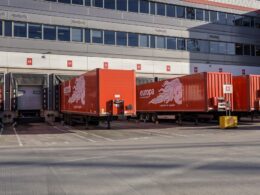Let’s be honest — the logistics sector has a lot on its plate. They’re the reason why you have enough goods to work with, and they make sure that your product gets to your customers. From ordering and storing to shipping, they do it all. Thus, there are plenty of logistics operations going on at all times, and managing them all isn’t an easy task. However, if you know the best practices in logistics management, you can make it a breeze.
That said, we don’t want you to get us wrong. Even if you know exactly what you need to do, you’ll still have to put a lot of work into it. Managing logistics is an ongoing process, and you need to constantly improve and optimize your supply chain to meet your customer demand and grow your business.
Of course, we want to help you, and we’ll give you all the tips and tricks you need. But to understand them, you’ll need to know the basics. So, let’s start with them.
What is Logistics Management?
Logistics management is the process of planning and managing all inbound and outbound logistics. Naturally, it also refers to reverse logistics, so all three major areas of the eCommerce supply chain are covered.
To clarify what we’re talking about, here’s a list of the things that it involves:
- Ordering, receiving, and storing inventory
- Tracking inventory
- Implementing automation and other new technologies
- Building warehouse workflows
- Shipping orders
Why is Logistics Management Important?
If your company is all about online sales, you have to pay attention to your logistics management. It’s essential for eCommerce businesses as it helps you oversee your supply chain, satisfy your customers, and cut costs. And here’s how it does it.
First off, it allows you to deliver products accurately. The eCommerce industry is highly competitive, and if you want to make it, you’ll have to get as close to that 100% order accuracy rate as possible. Through logistics management, you set accuracy goals, improve your workflows, and automate processes to reduce human error.
Secondly, it keeps logistics costs low. It’s simple — if you spend a lot on logistics, you’ll earn less in the bottom line. However, hiring third-party businesses can help you cut costs. Outsourcing is the new big thing, and there are many benefits in partnering up with a 3PL company. Pick the right partner, and you’ll save on warehousing, packing, and shipping.
Finally, proper logistics management will help you keep your customers happy. You won’t have to worry about people not getting the suitable packages or getting them late. And once you get everything running smoothly, you’ll see your costs getting lower. As a result, your brand will maintain a positive reputation, your customers will be loyal, and you’ll save money along the way.
Best Practices in Logistics Management
Now that you know all the basics, we can talk about the best practices in logistics management. If you’re going to do it by yourself, prepare to put a lot of time and effort into it. You’ll need to do lots of planning, and here are methods that will make it easier.
Draw Out Your Logistics Management Plan
Before implementing any new logistics process, you should align your goals and note everything you need to achieve them. So, think about your KPIs, available resources, and the equipment and technology you have or need to acquire. Please don’t be shy of data and use it as much as possible in this stage.
Find out which suppliers would be ideal for your needs and figure out how you’ll get them on board. Do plenty of research and keep your focus on dependable suppliers that have high-quality products and materials. Remember, you can do your job well only if they can efficiently get the product to you.
Next in the chain is your warehouse. Make sure to strategize how you’ll track the inventory and find ways to improve accuracy and speed. In essence, the better your storage and packing systems work, the more money you’ll make. Hence, investing in driverless forklifts might not be a bad idea if you can’t get qualified workers.
Of course, you can’t overlook the carriers in your network either. Consider their reliability and rates to determine the best one for your needs. Don’t be afraid to experiment and work with a few different companies before settling on one.
Use a Warehouse Management System
You can’t make money in eCommerce if your warehouse is a mess. And implementing a warehouse management system (WMS) is a great way to sort it out.
If you’re just starting and only have one warehouse, you might not think this is a big deal. But wait till you expand and open a couple of new locations. Things get messy fast. However, with WMS, you’ll get access to real-time data in an easy-to-read format, which will improve your supply chain visibility and help you streamline your processes.
Of course, for it to work on a larger scale, you’ll have to find a way to connect your warehouses with other tools like inventory management software. It’ll cost you some money, but it’ll allow you to make more of it. So, it’ll pay off in the long run.
Automate Your Supply Chain
The more processes you automate, the more efficient your supply chain will be. In general, all the repetitive and tedious operations can be automated, and if you can afford it, you should do it. It’ll free up time in your employees’ schedules, so they’ll be more focused on growing your sales.
That said, you should be careful not to fall for one of the mistakes of logistics automation. If you jump into it without a plan or follow the bad practices, you’ll spend a lot of money and won’t get any improvements.
Conclusion
Supply chain optimization isn’t a one-off activity. On the contrary, you have to work on it constantly to stay ahead of the curve. Luckily, the more effort you put into it, the higher return on investment you’ll get. Following the best practices in logistics management will get you on the right path, but it’s on you to stay on it.













